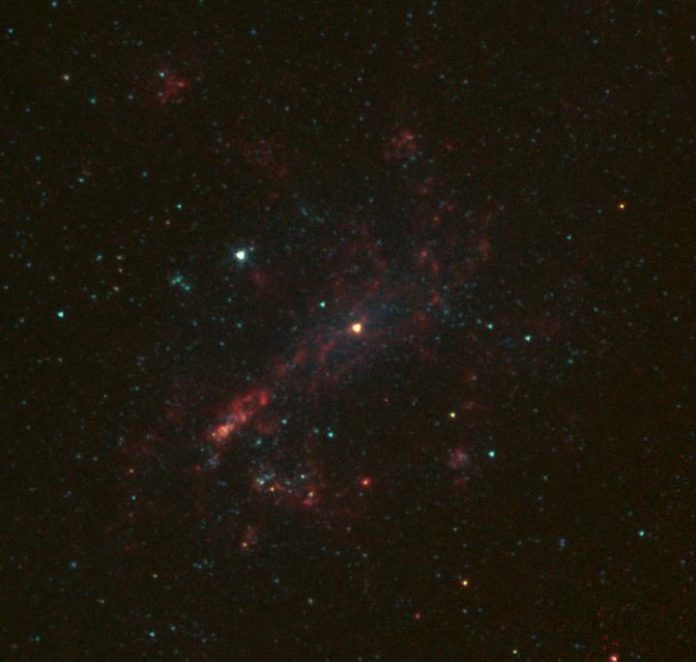The motions of gas and stars in the nuclei of nearby galaxies have demonstrated that massive black holes are common and that their masses correlate with the stellar velocity dispersion. This correlation suggests that massive black holes and galaxies influence each other’s growth.
As dynamical measurements are less reliable, thus it remains unknown whether this correlation exists in galaxies much smaller than the Milky Way. In a new study, a team including University of Michigan astronomer Elena Gallo has recently quantified the mass of a black hole at the center of a nearby dwarf galaxy, called NGC 4395, which is about 40 times smaller than previously thought.
To determine its mass, scientists used a technique called reverberation mapping, which measures mass by monitoring radiation thrown off by what’s called an accretion disk around the black hole.
As radiation travels outward from this accretion disk, it passes through another cloud of material farther out from the black hole that’s more diffuse than the accretion disk. This area is called the broad-line region. When the radiation hits the gas in the broad-line region, it causes atoms in it to undergo a transition.
This means that the radiation bumps an electron out of the shell of an atom of hydrogen, for example, causing the atom to occupy a more energetic level of the atom. After the radiation passes, the atom settles back into its previous state. Astronomers can image this transition, which looks like a flash of brightness.
Astronomers then measured the time taken by radiation to hit the broad-line region and cause these flashes. Doing this, they were able to quantify the distance between the broad-line region and black hole. Using this information, they can then calculate the black hole’s mass.
Gallo said, “The distance is thought to depend on the black hole mass. The larger the black hole, the larger the distance and the longer you expect for light to be emitted from the accretion disk to hit the broad-line region.”
Using data from the MDM Observatory, the astronomers calculated that it took about 83 minutes, give or take 14 minutes, for radiation to reach the broad-line region from the accretion disk. To calculate the black hole mass, they also had to measure the intrinsic speed of the broad-line region, which is the speed at which the region cloud is moving under the influence of the black hole gravity. To do this, they took a high-quality spectrum with the GMOS spectrometer on the GEMINI North telescope.
By knowing this number, the speed of the broad-line region, the speed of light and what’s called the gravitational constant, or a measure of gravitational force, the astronomers were able to determine that the black hole’s mass was about 10,000 times the mass of our sun–about 40 times lighter than previously thought. This is also the smallest black hole found via reverberation mapping.
Gallo said, “This regime of dwarf galaxies is largely unexplored when it comes to the properties of their nuclear black holes. We don’t even know if every galaxy has a black hole. This adds a new member to the family of black holes we have information about.”
According to scientists, this information could help them get better insights into how much larger black holes shape the galaxies they occupy.
Their findings are published in the journal Nature Astronomy.
